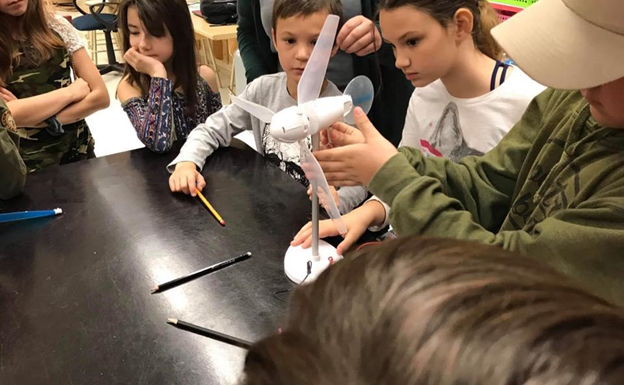How to Lead Change in Canadian Classrooms

The education system is complex. It has its own rules, expectations and even culture. And its workings are often opaque to outsiders, including environmental NGOs that want to work with students to promote sustainability, green jobs and a cleaner future.
Too often, our organizations treat classroom-based initiatives as an add-on or just part of the job. We think a fun-filled workshop for a great cause is all it takes. But in more than 10 years of working in classrooms to promote environmentalism, I can tell you that good intentions are not enough.
At The Gaia Project, we empower youth to take action on climate change through education. For over a decade, we’ve been developing and delivering programs across all school levels in New Brunswick. It is our sole focus. And it’s a big job.
We’ve learned a lot about what it takes to work effectively in and with schools. Creating change at the classroom level takes rigour and strategy. If you are outside of the education sector looking to have a meaningful impact, here are the top four lessons I’ve learned from years of supporting educators:
1. Know Your Provincial Curriculum Outcomes
Teachers at all grade levels have to follow a set of curriculum guidelines mandated by provincial departments of education.
Whatever stage of program development or delivery you’re at, find out where it fits across all curriculum areas. Literacy, math, fine arts, theatre, science, social studies: the more connections you can make, the more classroom time can be allocated to your cause.
For Gaia, an organization focused on climate action, which is not part of the New Brunswick curriculum, we find pathways into classrooms through activities that speak to a range of skill development. Outcomes related to critical thinking and problem solving, innovation and entrepreneurship, and global citizenship are embedded in the New Brunswick curriculum and need to be evaluated by teachers through a range of activities, including climate education.
If you don’t know what’s being taught in your district, reach out to your department of education, as all curricula should be publicly accessible.
2. Come Prepared Like a Teacher
To be successful, you must be the teacher’s ally. Teachers are busy, and there are a lot of competing demands on their classrooms and time. The last thing you want is to make more work for them, a sure-fire way to not get invited to share feedback again.
You need to make your visit easy and productive. Arrive prepared with more than just your program supplies. Think about additional resources a teacher could use to further learning and academic outcomes, like a list of the vocabulary you covered, a short quiz or survey on the concepts in your presentation or a grading rubric to assess the outcomes you’re looking to achieve. It’s the small stuff that makes a big difference.

3. Incorporate Inquiry into Everything You Do
The old way of teaching was stand-and-deliver, with teachers stating facts to students.
Luckily, today schools use an inquiry-based approach, where the guest or teacher guides students through questions, letting them actively explore and discover information to support their investigations.
Inquiry is essential for students to truly engage with topics, especially about the environment. Recognizing that students will have diverse viewpoints, interests and backgrounds, it’s important to connect what you teach to what’s meaningful to the students. Climate action, for example, can take many forms for students. Make sure that there is more than one right answer or path.
For instance, actions around solid waste reduction could range from creating a school waste policy, writing and delivering a series of announcements, and fundraising for a new school asset like a compost bin or recycling system. They all reduce school waste and can all have profound impacts!

4. Seek Feedback Continually
Whether you’re designing a program or have been running one for years, it’s important to continue to assess your effectiveness from a multitude of perspectives. For many ENGOs, changes to behaviour, attitudes and beliefs around environmental issues can be important data points to assess whether your program is fulfilling your mission.
It’s also important to ask questions like:
- Is this program easy and enjoyable for my staff to run?
- Are teachers and my staff still excited about it?
- Have any curricular or educational values shifted since we developed the program?
- Could this program better serve students?
If you’ve developed a tool for teachers to use on their own, ask if they actually use it and, if so, how. So much money goes into creating resources for teachers that gather dust due to a lack of insight. While providing a binder may seem like a great way to encourage educators to teach about a certain topic, with no professional learning, hands-on support or incentives, odds are your hard work will be shelved.
If you want to work with students to make a change, dedicate yourself fully to it and make it fun, easy and meaningful to your audience, including teachers!

















